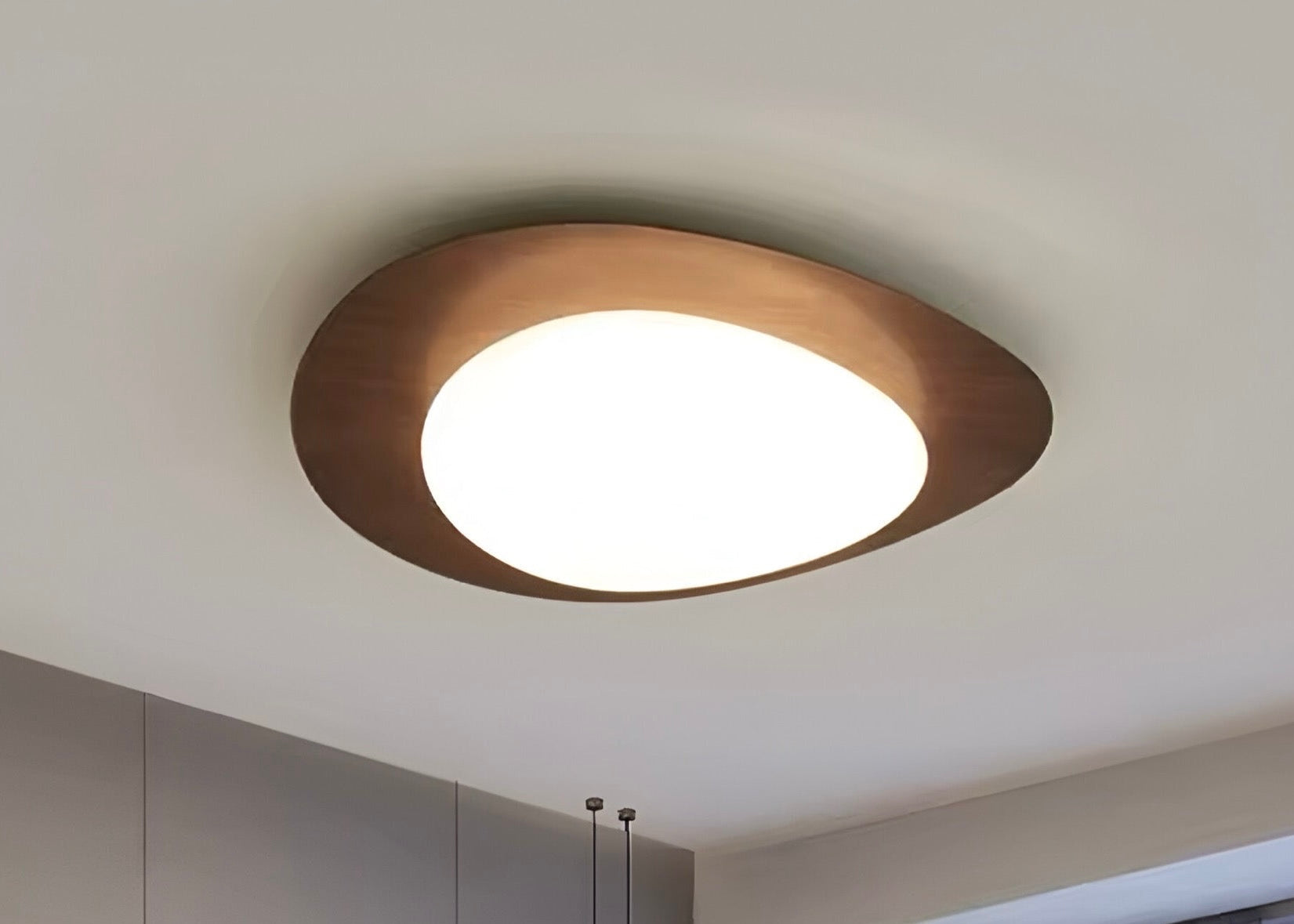
Connecting garden lighting correctly
Illuminate your outdoor area: a detailed do-it-yourself manual for veranda and garden lighting
The magic of outdoor lighting
Outdoor lighting has a kind of magic. It transforms a dark, perhaps hostile yard into a place that appears safe, friendly and quite beautiful. Well-placed lights can highlight architectural details, enhance the curb appeal, light pathways for safety, and increase the usability of your outdoor spaces long after the sun goes down.

Although you're full of beans, it might seem intimidating at first to take the installation of outdoor lighting into your own hands. Excavation, wiring, connection... It sounds difficult! The good news is that a motivated DIYer can easily tackle many outdoor lighting projects, especially low-voltage landscape lighting systems. And even changing a standard porch light isn't rocket science if you have the right tips and safety measures handy.
This comprehensive guide will give you a good overview of what to expect. Focusing on the two most typical DIY situations, installing low voltage garden lighting and replacing a line voltage fixture like a porch light, we'll cover everything from planning your layout to connecting the wires and troubleshooting common problems.
Before you start: The essential planning phase for ALL outdoor lighting
Never underestimate the importance of planning. Ignoring this stage is the quickest route to frustration, extra shopping trips and potentially disappointing results.
Clearly state the intended use of your lighting.
- Safety & security: Illumination of dark corners near the house, stairs, driveways and walkways. Safety requires motion-controlled floodlights.
- Create atmosphere and beauty for patios, terraces or seating areas.
- Emphasize architectural details, garden beds or tall trees.
- Areas such as outdoor kitchens or barbecue areas should be functionally illuminated.
- Enhance the appearance of the front of your home and street front landscaping.
Take a notepad and a pencil or an iPad and then sketch out your plot.
Draw a simple map of your garden, including:
- The floor plan of your house, windows, doors.
- Patios, decks, walkways, driveways and stairs.
- Important elements of the landscape are trees, shrubs, flower beds, water features and fences.
- The location of the outdoor Ground Fault Circuit Interrupter (GFCI) outlets is important for the operation of landscape lighting transformers.
- Current locations for outdoor lights (like your porch light).

"Painting" with light - place your lights (on paper):
Mark on your sketch where you want the lights to be. Keep this in mind:
- Usually positioned six to ten feet apart, path lights-whichhighlight the path itself-are found along driveways and sidewalks.
- Spotlights and floodlights are used to highlight special elements such as architectural details, sculptures or trees. While floodlights cover more area, spotlights have a smaller beam of light. Think downlighting, or mounting up and shining downwards, or uplighting.
- Ideal for softly illuminating trees or walls without the luminaire being visible, ground luminaires are buried in the ground.
- Improve the safety and atmosphere on stairs and deck edges with deck and step lights.
- Designed to be integrated under capitals or in retaining walls, hardscape luminaires.
- They usually flank doors or garage entrances, wall lights-wall sconcesor porch lights-are mounted on vertical surfaces.
Choose your lighting styles based on the look of your home and your outdoor area.
There are classic lanterns as well as elegant, contemporary designs. Also consider the light source (LED is highly recommended for energy efficiency and lifespan) and the durability of the material (metal vs. plastic).
Remember the power source; the path deviates here.
- Low voltage landscape lighting: transformers allow connection to a standard GFCI powerPower plug. safer and easier for DIY projects in the garden. Our next section will focus on this.
- Mains voltage lighting (120V): Like a porch light or a permanently installed floodlight, line voltage lighting is connected directly to your home's wiring. This requires more electrical knowledge and care. Later we will talk about replacing these lights.
First step: Installing your favorite 12V garden lighting
Low-voltage 12V systems are becoming increasingly common because the wiring is easier to handle and they are much safer to operate than ordinary household electricity. Smart lights such as those from Philips Hue make connection and configuration easier.

First step: The transformer heart of your system
The transformer lowers the 120V power from your home to a safe 12V for the landscape lights.
- Determine the wattage: This is absolutely crucial! Add up the wattage of each lamp you want to install.
- Choose a transformer with a wattage higher than your total. Aiming to utilize no more than 70-80% of the transformer's capacity will help account for possible future expansion or voltage drops over long cable runs.
- For example, you have two spotlights with 7 watts each (14W) and ten path lights with 4 watts each. The total output is 54 watts. You would need a 100W or 120W transformer.
- Choose a location for the transformer near an outdoor outlet that is protected by a GFCI. Choose a location that is somewhat hidden but easily accessible-for example, the side of the house or the back of a garage. It should be at least 30 cm above the ground.
- Attach the transformer firmly to the wall or a stable post in accordance with the manufacturer's recommendations. DO NOT plug it in yet!

Secondly: Arrange cables and lights.
- Place your light fixtures on the floor according to your design.
- Start at the transformer and lay the low-voltage landscape cable-usually
12 gaugeor14-gauge-along the intended path that passes each luminaire location. Check your transformer/luminaire recommendations here. - Do not cut individual short cables for each light yet! Leave some extra slack around the transformer and at each connection point for modifications.
-
Wiring strategies:
- Daisy-chain method: Laying a continuous cable from luminaire to luminaire. Simple, but voltage drop-that is, lights furthest from the transformer-may be dimmer.
- T method: Lay a main line and make smaller branches to individual lights or small groups. This helps to balance the voltage.
- Hub method: Separate cables from a central hub-connected to the main line-from each luminaire or group. Ideal for complicated designs and the lowest possible voltage drop.
The third step is to connect the lights.
- Most modern low-voltage lights use tool-free terminal connectors from luminaire to cable. These cut through the cable insulation to make contact with the inner wires.
- Carefully separate the two wires in the landscape cable at the attachment point.
- Push the cable into the socket groove. Bring the connector halves firmly together until they click or lock into place. Make sure that the metal pins completely penetrate the cable insulation.
- If the plug is not already integrated, connect the wire connection of the light (pigtail) to it.
- Cable from the transformer: Strip ½ to ¾ inch of insulation from the end of the landscape cable lines. On the 12V transformer, loosen the terminal screws. Attach one wire under one terminal screw; attach the other wire under the second terminal screw. For simple systems, it usually makes no difference which wire is connected to which 12V terminal, but check your transformer manual anyway. Tighten the screws very firmly. Make sure that no extra strands of wire cross the terminals.
Fourthly: Test everything before you bury it!
This is perhaps the most important measure to avoid problems.
- Check the security of each connection.
- Disconnect the transformer from the GFCI.
- Switch on the transformer-perhaps with a photoresistor cell, a timer or a manual switch.
- Walk along the line and make sure that every single light works.
-
Troubleshooting: First disconnect the transformer if a light fails! Then check:
- The light bulb: burnt out or used correctly?
- The connection to the main cable is the plug firmly clamped? Have the contacts cut the wire?
- Less common, but theoretically possible, internal wiring for the luminaire.
- If an entire section does not work, look for cable damage or check the connections leading into this section.
- If nothing works, check the following:
- Is the transformer switched on?
- Is the reset button on the GFCI powerPower plug triggered?
- Has the circuit breaker of the Power plug tripped?
- Is the circuit breaker/timer of the transformer set correctly?
The fifth step is to bury the cable.
As soon as everything is running smoothly:
- Dig a small trench, usually 10-15 cm deep, along the cable route. Ideally, you should use a flat shovel or a trencher.
- Lay the cable carefully in the trench, taking care to avoid sharp stones or roots that could damage it over time.
- Avoid sharp bends in the cable wherever possible.
- Gently press the soil down and cover the cable. You can sweep ground cover or mulch over the trench line.
- Important: Although low voltage cables typically have fewer safety regulations, local codes may have specific depth requirements, especially if they run under sidewalks. Ask if you are unsure.

Set the timer and sensors in step six.
- Most transformers contain integrated photo relays (dusk-to-dawn sensors) or timers.
- Photo resistor: Switches the lights off at sunrise and on automatically at sunset.
- Timer: allows you to set specific switch-on and switch-off times.
- Think about switching to a smart transformer or plug that allows you to control via schedules, smartphone apps and integration with other smart home devices.
Part 2: Install or replace a mains voltage light - for example a porch light
This requires working with your home's standard 120V wiring. First and foremost, safety is important. Consult a licensed electrician if you are unsure about any step, have old wiring (like aluminum or knob-and-tube), or find working with electricity uncomfortable. The risk is not worth it.
This guide covers the replacement of an existing fitting. Often, adding a new light where there was none before requires the laying of new cables. This is best left to an expert.
Important safety instructions when working on the 230V mains
- ALWAYS switch off the power: Locate the correct circuit breaker in the fuse box and switch it OFF.
- Check, check, check: Use a non-contact voltage tester on ALL wires (black, white, bare/green) in the junction box to make sure the power is REALLY off before you touch anything.
- If you are unsure: call a qualified electrician. It is better to be on the safe side.
- Never work on hot wires: Never touch electrical wires or connections when the power is on.
- Use suitable tools: Use insulated tools if possible.
Safety first, step 1: Switch off the power.
- Go to the main power panel or the fuse box of your house.
- Find the circuit breaker that controls the particular light you are working on. If you're not sure, you may need to test the fuses by having someone watch the light while you flip them one by one. It might be labeled "porch lighting", "outdoor lighting" or "outdoor area".
- Switch off the corresponding switch completely. If you are unsure, it is best to switch off all the fuses.
- Most importantly, check that the power is really switched off. Experiment with turning the light switch for the light on and off. After the old light fixture is removed, use a non-contact voltage tester near the wires in the electrical box to verify that NO current is flowing. Check each black, white and ground wire. If you find voltage, stop here.

Second step: Remove the old light.
- Normally the light base is fixed to the mounting bracket attached to the electrical box in the wall using decorative nuts or screws. Remove these.
- Carefully pull the old luminaire away from the wall to expose the wire connections. Hold the weight of the light so that it does not just hang by the wires.
- Check the wire connections, usually with wire nuts. Normally you will observe the following:
- Live black wire from the house that is connected to the light.
- White wire (neutral) from the house connected to the luminaire.
- The bare copper or green wire from the house is connected to the earthing wire of the luminaire or a green screw on the mounting bracket or the luminaire housing.
- To disconnect the wires, unscrew the wire nuts counterclockwise. Untangle the cables.

Third step: Check the wiring and install a new bracket.
- Look at the house wires coming out of the electrical box. Look for signs of burn marks, brittleness or damage. Do you see any problems? Stop immediately and call an electrician.
- A mounting rail or bracket is supplied with your new light. Follow the luminaire instructions and attach it to the electrical wall box using the screws provided. Check that it is secure.
- On this new bracket, the house earthing cable may need to be wrapped around a green screw.
Fourth step: Wire the new light.
This is the part of the critical wiring. Use the prescribed color code:
- Connect the black, live wire from the electrical box to the black wire of your new light.
- Connect the white neutral conductor from the box to the white wire of the light.
- From the junction box, connect the bare copper or green (earthing) wire to the green or bare copper wire from the luminaire. The house ground wire is often also connected to a green screw on the mounting bracket. Make sure that each earthing connection is set up.
- Hold the bare ends of the wires parallel to each other to make the connection. Typically included with the device, screw a wire nut clockwise onto the wires.
- Ensure that the cap covers all bare copper wires, except the ground wire connections, and is firmly seated. To ensure that each wire is firmly seated in the connector, gently pull on each one.
- No bare copper should be visible under the wire nut except for the earthing cable.
Step five: Install the new light.
- Carefully insert the connected wires back into the electrical box.
- Align the new light over the mounting bracket. Use the screws or decorative washers supplied to secure the light to the bracket.
- Check that it is exactly flush with the wall.
- Outdoor sealant should be applied around the top and side edge of the luminaire base where it meets the wall to make it weatherproof. To ensure that moisture can drain behind the luminaire, leave the bottom edge uncovered.
The sixth step is to restore and test the power supply.
- Back to the fuse box, set the circuit breaker back to the ON position.
- Turn on the light switch that controls the light you have just installed. It should come on!
- If not, turn the switch off again immediately.
- Check your wire connections: Did black go to black, white to white, ground to ground?
- Are the wire nuts tight?
- Examine the light bulb.
- If you continue to have problems, contact an electrician.
Repair and maintenance troubleshooting
-
Low-voltage dimming: Often caused by voltage drop with long cables or overloading of the transformer. Solution: Use a thicker cable (lower number, e.g.
12 gaugeinstead of14-gauge), teilen Sie die Leitung (T- oder Hub-Methode) oder stellen Sie sicher, dass Ihr Transformator nicht überlastet ist (Gesamtwattzahl der Leuchten < 80% der Transformatorleistung). - Intermittent lights: May be due to loose connections (especially terminal connectors), a faulty bulb or occasionally transformer problems. Check the connections first.
- GFCI trips / lights do not come on at all: Usually indicates a short somewhere (damaged wire insulation, water intrusion into a connection or light fixture), and the GFCI tripping also indicates a faulty transformer or light fixture. Methodically disconnect the parts (e.g. half the lights) to isolate the problem.
- Maintenance: Frequent cleaning of the lenses will help maximize light output. Sort garbage from the fittings. Periodically, say once a year, check that the wire connectors-especially those with terminals-are still tight.
When should you consult a professional electrician?
- You are worried about working with electrical cables, but you are particularly uncomfortable with mains voltage.
- Either your home has old or non-standard wiring (e.g., aluminum, cloth jacket, knob-and-tube).
- Either the laying of new circuits or the installation of new electrical boxes requires your expertise.
- You encounter recurring problems that you cannot identify (e.g. constant triggering of the GFCI).
- Their special installation requires local permits, which are typically associated with high-voltage work.

Have fun in your illuminated oasis!
A satisfying DIY project that will greatly improve the safety, curb appeal and usability of your home is the installation of outdoor lighting. Careful planning, choosing the appropriate system (low voltage for landscapes, careful substitution for line voltage), placing the highest priority on safety, and following the guidelines outlined here will help you properly illuminate your outdoor spaces in beautiful, useful light. So, gather your tools, embrace the process, and prepare to appreciate your brilliantly lit landscape!


